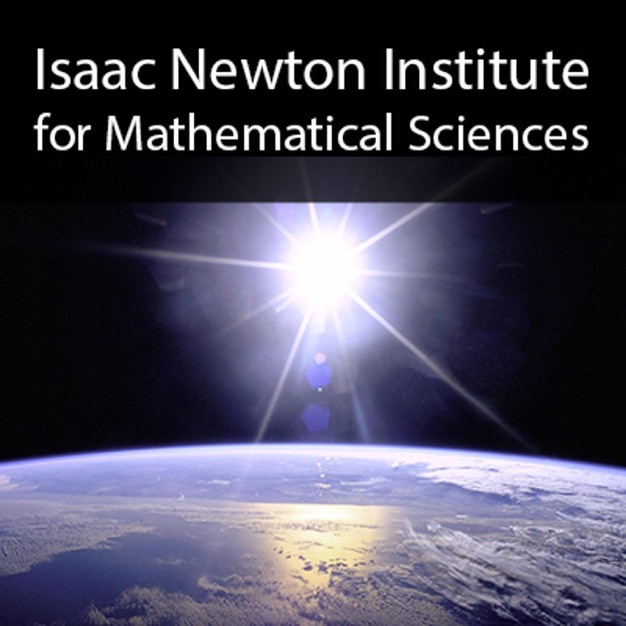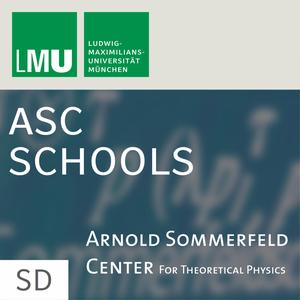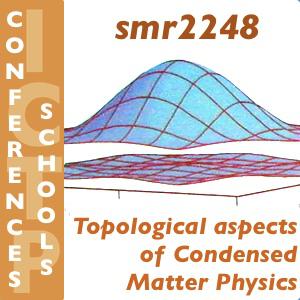
Mathematics for the Fluid Earth
The purpose of this programme is to bring together scientists from very different perspectives in models of the dynamics of the fluid components of the Earth system. This interest may be directly into the modelling, also numerical, or at a more abstract modelling level in terms of understanding the climate system as a complex dynamical system. This programme aims to prove that there is a close connection between “core” questions and problems of pure and applied mathematics and “core” questions of geophysical fluid dynamics relevant for the investigation of the climate system and of its component, and that these are closely linked to defining rigorously what is a good model for a complex system. The aim of the programme is to provide a common ground for fostering mutually stimulating and inspiring exchanges and for creating opportunities for future research.
- 1 hour 9 minutesAsymmetric inertial instabilityZeitlin, V (Laboratoire de Météorologie Dynamique (LMD-ENS)) Wednesday 11 December 2013, 11:00-12:0017 March 2014, 2:01 pm
- 1 hour 2 minutesExtremes as indicators of critical transitionsLucarini, V (Universität Hamburg) Thursday 19 December 2013, 10:00-11:003 February 2014, 3:50 pm
- 1 hour 9 minutesNonequilibrium statistical mechanics approach to turbulenceI will present an overview how superstatistical techniques (a method from nonequilbrium statistical mechanics) can be successfully used to model the statistical properties of turbulent flows. Examples treated are classical turbulence, quantum turbulence, environmental turbulence (wind gusts) and, if time remains, dark matter turbulence.3 February 2014, 3:49 pm
- 1 hour 1 minuteExtreme values for deterministic and random dynamical systemsIt is well known that the Extremal Index (EI) measures the intensity of clustering of extreme events in stationary processes. We sill see that for some certain uniformly expanding systems there exists a dichotomy based on whether the rare events correspond to the entrance in small balls around a periodic point or a non-periodic point. In fact, either there exists EI in (0,1) around (repelling) periodic points or the EI is equal to 1 at every non-periodic point. The main assumption is that the systems have sufficient decay of correlations of observables in some Banach space against all L1-observables. Then we consider random perturbations of uniformly expanding systems, such as piecewise expanding maps of the circle. We will see that, in this context, for additive absolutely continuous noise (w.r.t. Lebesgue), the dichotomy vanishes and the EI is always 13 February 2014, 3:48 pm
- 1 hourPredictability of extreme events in dynamical systems: A case study of the Lorenz 84 modelBodai, T (University of Hamburg) Wednesday 18 December 2013, 10:00-11:003 February 2014, 3:46 pm
- 47 minutes 54 secondsOn Time Integration and the Use of Clebsch Variables in Shallow Water EquationsTwo topics will be covered in this lecture. The shallow water equations will be used as a test bed to introduce the ideas. (i) For forced variational systems such as the potential flow shallow water wave equations, variational and symplectic time integrators will be extended using a new finite element approach. Here, a standard variational finite element discretization will be applied in space. (ii) The shallow water equations formulated in terms of Clebsch variables will be discussed. The advantage of Clebsch variables is that they lead to canonical Hamilton's equations for shallow water dynamics, in the Eulerian framework. A disadvantage is that the the system, is less compactly expressed in comparison to the usual formulation in terms of the velocity and fluid depth. I will make a link between a symmetry in the Hamiltonian and the associated mass weighted potential vorticity conservation law, also within the Eulerian framework. This will be done in two dimensions (2D) and in a quasi-2D symmetric form.17 December 2013, 9:29 am
- 59 minutes 37 secondsLarge-scale tropical atmospheric dynamics: asymptotic nondivergence?Yano, J-I (Meteo France) Tuesday 10 December 2013, 11:00-12:0013 December 2013, 3:42 pm
- 57 minutes 23 secondsRare events, negative measure dimensions and return time statisticsMantica, G (Center for nonlinear and Complex Systems, Universita' dell'Insubria) Thursday 12 December 2013, 10:00-11:0013 December 2013, 3:39 pm
- 47 minutes 52 secondsMonge-Ampère equations: geometry, invariants, and applications in 3D meteorological modelsI describe a symplectic geometric approach to Monge-Ampère equations, discuss some classical and modern geometric structures related to this class of non-linear equations, their invariants and their role in 3D meteorological models. My talk is based on joint works with B. Banos and I . Roulstone.13 December 2013, 10:33 am
- 44 minutesDifferential Geometry of the Semi-Geostrophic and Euler EquationsThe role of contact and symplectic geometry of the semi-geostophic (SG) equations, in describing their Legendrian and Hamiltonian properties, will be reviewed. Using the geometry of 2-forms in 4 dimensions and the geometry of 3-forms in 6 dimensions, we show that the incompressible Euler equations in 2 and 3 dimensions admit geometric structures akin to the those present in the SG equations.13 December 2013, 10:28 am
- 47 minutes 37 secondsThe Range of Planetary Circulations Described by the Dry Primitive EquationsCo-authors: Jonathan Mitchell (UCLA), Sam Potter (Princeton University) The dry primitive equations can, with appropriate forcing and dissipation, provide a reasonable simulation of the large-scale features of the Earth's atmosphere and ocean. In this talk I will describe the behaviour of these PDEs when they are taken out of the terrestrial parameter regime. In n particular, I will describe their behaviour when the thermal Rossby number, Ekman number and a radiative relaxation timescale are varied considerably, moving into a parameter regime more appropriate for Mars or Titan. I will pay particular attention to the formation of zonal jets, and in particular of equatorial superrotation, which is a feature of some other planets. It is well-known that zonal jets robustly arise in rotating atmospheres if there is a wavemaker at a particular latitude. Rossby waves are then generated that propagate away, and eastward momentum converges on the source region producing a zonal jet. The Earth's jet stream is, in part, formed this way. However, on slowly rotating atmospheres it seems unlikely that superrotation is produced by that mechanism. Rather, simulations indicate that, at small thermal Rossby number, a mechanism involving equatorial Kelvin waves is involved.11 December 2013, 5:43 pm
- More Episodes? Get the App
Your feedback is valuable to us. Should you encounter any bugs, glitches, lack of functionality or other problems, please email us on [email protected] or join Moon.FM Telegram Group where you can talk directly to the dev team who are happy to answer any queries.
 Scientific Computing for DPhil Students
Scientific Computing for DPhil Students
 Theoretical Physics Schools (ASC)
Theoretical Physics Schools (ASC)
 Topological Aspects of Condensed Matter Physics (Workshop and School)
Topological Aspects of Condensed Matter Physics (Workshop and School)
 Lectures on the Geometric Anatomy of Theoretical Physics 2013/2014 (SD 640)
Lectures on the Geometric Anatomy of Theoretical Physics 2013/2014 (SD 640)
 Modelling
Modelling